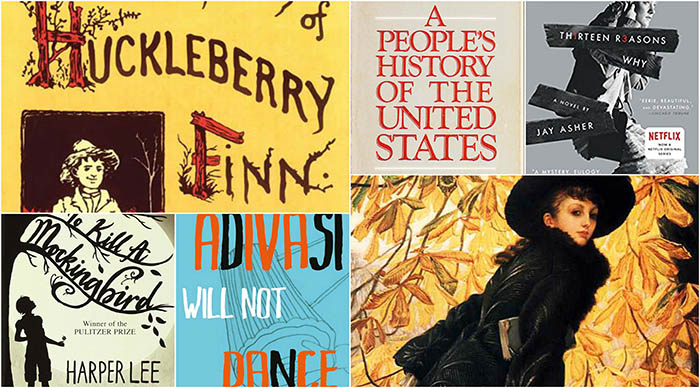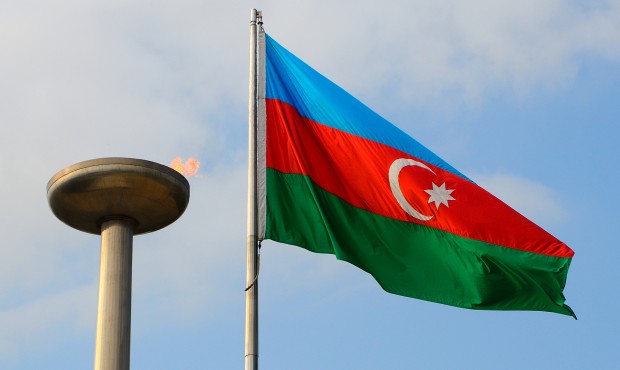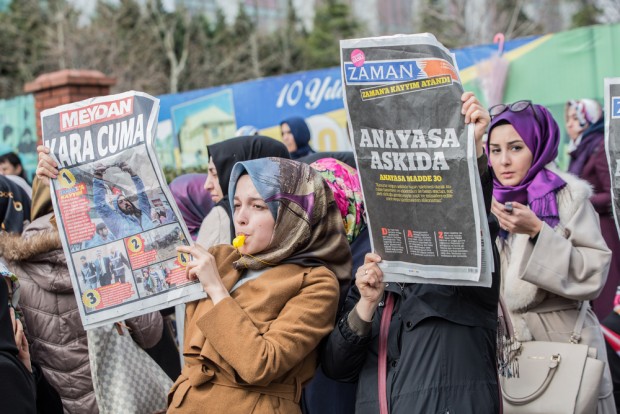27 Sep 17 | Campaigns -- Featured, Counter Terrorism, Statements
[vc_row][vc_column][vc_column_text]The conviction of Muhammad Rabbani, director of advocacy group Cage, for refusing to divulge his phone pin and passwords under the UK’s anti-terror legislation is very concerning.
Index on Censorship CEO Jodie Ginsberg said:
“We have already seen these powers used against journalists in a way that seriously puts at risk confidential sources and contacts. The legislation threatens the work of reporters and of advocacy groups like Index, who work on a daily basis with individuals under threat in their own countries and for whom anonymity and confidentiality can be a matter of life or death.
“This is a worrying trend not just in the UK but in many countries, including the United States where powers to demand passwords have been used against journalists on a number of occasions as we detailed in our report on the country.”
Rabbani was found guilty under Schedule 7 of the Terrorism Act.[/vc_column_text][/vc_column][/vc_row][vc_row][vc_column][vc_basic_grid post_type=”post” max_items=”12″ style=”load-more” items_per_page=”4″ element_width=”6″ grid_id=”vc_gid:1507723940632-4de12008-52e9-8″ taxonomies=”413, 18380, 11489″][/vc_column][/vc_row]
27 Sep 17 | Europe and Central Asia, Hungary, Mapping Media Freedom, Media Freedom, media freedom featured, News and features
[vc_row][vc_column][vc_column_text]

Viktor Orban (Credit: European People’s Party)
As Hungary prepares for parliamentary elections, independent journalists have become a target of the pro-government media outlets. This follows a speech by Hungarian prime minister Viktor Orban at the end of July at Tusványos, the annual Fidesz jamboree in Băile Tușnad, Romania, during which he said: “We must stand our ground against the Soros mafia network and bureaucrats in Brussels, and will have to go to battle against the media they operate in the coming months.”
Orban’s message at Tusványos is considered a preview of what to expect from the Hungarian government in the following months. A few days after the speech, Magyar Nemzet daily reported that the prime minister’s words signal a clear change in tactics: instead of defaming independent media outlets and their owners, pro-government media outlets started going after prominent journalists, known for their work of exposing the corruption of the Hungarian government.
During September 2017, pro-government media outlets started publishing articles discrediting leading Hungarian journalists critical to Orban’s regime.
On 5 September 2017, 888.hu published a list of journalists accused of being “mouthpieces” for George Soros, who has been called a “national security risk” and a “public enemy” by Orban for allegedly supporting the mass immigration of Muslims into Europe.
“The international media, with a few exceptions, generally write bad things about the government because a small minority with great media influence does everything to tarnish the reputation of Hungary in front of the world — prestige that has been built over hundreds of years by patriots,” 888.hu wrote.
Among those listed are Lili Bayer, a journalist working for Politico, László Balogh, a Pulitzer-winner photographer, Márton Dunai, Gergely Szakács and Sándor Pető, journalists working for the Reuters news agency, as well as Zoltán Simon, a journalist working for Bloomberg, and ZDF producer István Sinkovicz.
“The article is indicative of the extent to which the pro-government press seems willing to carry out the political orders of prime minister Viktor Orbán,” Budapest Beacon commented, adding that the editor in chief of 888.hu is Gábor G. Fodor, deputy chairman of Századvég Foundation’s board of trustees. Századvég is a think-tank and consultancy that has been embroiled in numerous scandals involving large government orders since 2010. The publisher of 888.hu is Modern Media Group Zrt., a company owned by Árpád Habony, an informal advisor to the prime minister.
The list was condemned by the 3,500-member National Association of Hungarian Journalists (MUOSZ). The body said that there is no evidence of any contact between Soros and the journalists named in the piece. “Stigmatising colleagues by using listing methods that hark back to former anti-democratic times is far from the practice of democratic journalism and informing (the public),” said MUOSZ.
The campaign against journalists continued on 11 September 2017 with a piece on 888.hu attacking Gergely Brückner, one of Hungary’s leading business journalists working at index.hu. The piece accused Brückner of writing an article about the political-diplomatic background of several millions of dollars transferred to Hungary from an Azerbaijani slush fund without any evidence.
“I was not particularly bothered by the editorial, although I don’t think he understands correctly where the trenches in the Hungarian media landscape are,” Gergely Brückner told Index on Censorship. “He also exaggerates my importance (of course, I felt flattered), and for sure he does misunderstand the goals I had with my articles.”
“It is known that the ruling party is always looking for enemies, these being refugees, Soros, the EU, NGOs and independent journalists, all of which are under attack,” Brückner added. “This is how they are trying to keep their core voters engaged.”
Unfortunately, ordinary media consumers have a difficulty in making a distinction between independent, fact-based journalism and biased, post-truth journalism, as Brückner explains. “I am not disturbed at being targeted and it does not influence my work or my sources. They had an obviously exaggerated opinion about me, but they did not have false statements. In the latter case, I would seek legal redress.”
On 14 September 2017, Attila Bátorfy, a data journalist at investigative website Atlatszo.hu and research fellow at CEU’s Center for Media and Communication Studies was also the target of a defamatory article published on an obscure blog, Tűzfalcsoport. The piece, illustrated with a photo of enlarged mites, is claiming that Bátorfy’s piece on the spread of Russian propaganda in Hungary is based on faulty evidence.
A day later, on 15 September 2015, Pesti Srácok, another website close to the government published an article about András Földes, a journalist working for index.hu who reported extensively on the migration crisis. The piece is a list of Földes’s more important reports, along with “ironic” commentary.
“When he goes to war zones, he watchfully takes a peek on the trenches, carefully avoiding danger, then he presents the things he saw as he wishes (…). His extraordinary talent is also shown by the fact that he believes anything to 17-year old immigrant men born on 1 January. At least we hope he naively believes the overstatements he writes about, and these (overstatements) are not invented by him,” the article goes.
Even if the readership of such a blog or website is relatively small, these articles are usually echoed in the media universe loyal to Orban and are often referenced by the public media as well, meaning that the allegations reach a considerable audience.
The recent defamatory pieces are only the tip of the iceberg of the attacks on press freedom in Hungary. Since 2010, the Hungarian government led by Orbán is working systematically to silence critical voices by changing the legal framework regarding media, redrawing the advertising market, introducing preferential taxes that only hit certain, independent broadcasters, buying up media companies, or simply closing them down, as happened with the largest opposition newspaper, Népszabadság.
The most alarming recent incidents regarding press freedom in Hungary:
Police check IDs of TV crew filming new PM office
Journalist assaulted at a Fidesz public forum
Largest opposition daily suspended
Parliamentary amendment restricts access to public information[/vc_column_text][/vc_column][/vc_row][vc_row][vc_column][vc_basic_grid post_type=”post” max_items=”4″ element_width=”6″ grid_id=”vc_gid:1506503807710-1289f6d8-e51b-2″ taxonomies=”2942″][/vc_column][/vc_row]
26 Sep 17 | Artistic Freedom, News and features
[vc_row][vc_column][vc_column_text]
An annual celebration of the freedom to read, Banned Books Week was launched in 1982 in response to a surge in book censorship in schools, bookshops and libraries in the USA.
Since then, over 11,300 books have been banned. Thankfully, there have always been those committed to challenging censorship, including authors, librarians, teachers and students.
But what are the censors so afraid of? Here are 10 books banned in some way over the last year to give us an idea.
13 Reasons Why – Jay Asher
The Netflix adaption of Jay Asher’s young adult novel 13 Reasons Why has been causing controversy over its exploration of teenage suicide ever since its release in March 2017. So much so that New Zealand’s classifications body created a whole new category of censorship, RP18, to restrict the showing of the series to anyone under the age of 18.
Naturally, the treatment of the book itself has followed suit, with many calling for the book to be banned over its perceived irresponsible or unrealistic handling of issues of mental health.
An official Mesa County Valley School District in Colorado, USA, briefly ordered librarians to pull 13 Reasons Why from school bookshelves in April 2017. However, after the intervention of a number of librarians, the curriculum director for the district reversed her decision.
The works of Howard Zinn fall foul of US Republican lawmakers
In May 2017, US Republican senator Kim Hendren of Arkansas introduced a bill to ban the works of the late social activists and Boston University professor Howard Zinn from public schools.
Zinn’s A People’s History of the United States, which is part of many school and college curriculums across the country, is an attempt to bring to light parts of US history that aren’t covered in-depth elsewhere, including equality movements throughout the 20th century.
Many US conservatives argue that there is already too much focus on race and class, including slavery and the genocide of Native Americans, in school curriculums. Bills such as Hendren’s — and that of an Oklahoma lawmaker in 2015 which sought to correct the fact that the USA was not portrayed in a positive enough light in history curriculums — are intended to redress the situation.
However, Hendren’s bill has only increased demand for the works of Zinn. Some 700 copies of A People’s History of the United States were sent free to teachers and librarians throughout Arkansas thanks to the controversy and thanks to a flood of donations copies are being given away to any middle or high school teacher or librarian in Arkansas who asks.
To Kill a Mockingbird – Harper Lee
The Adventures of Huckleberry Finn – Mark Twain
In December 2016, a US school district has banned To Kill a Mockingbird and The Adventures of Huckleberry Finn after a parent complained about use of racist language. The books were removed from classrooms and school libraries in Accomack County, Virginia.
It came after one parent told a school board meeting: “I’m not disputing this is great literature, but there is so much racial slurs in there and offensive wording that you can’t get past that, and right now we are a nation divided as it is.”
Racism is a central theme in Mark Twain’s classic work, which explores the oppression of black slaves in pre-Civil War America. It includes the word “nigger” over 200 times. But it is a satire which tackles racism with irony and many fans of the book would agree that is, in fact, a great anti-racist novel. Which is why so many were dismayed in 2011 when a new edition of Huckleberry Finn was released with all uses of the offending word removed.
Likewise, the treatment of To Kill a Mockingbird seemed to be more motivated by the words characters use rather than its critique of racism.
The Adivasi Will Not Dance – Hansda Sowvendra Shekhar
Along with thinking of the children, protecting the dignity of women has always been a mainstay of the moralists. In 1928 all of Chicago’s public libraries removed the Wizard of Oz for “depicting women in strong leadership roles”. Such attitudes are not a thing of the past.
In August of this year, the Jharkhand government in eastern India banned The Adivasi Will Not Dance, a collection of short stories by the award-winning Indian writer Hansda Sowvendra Shekhar, for daring to depict women from the Santhal tribe in a sexual way.
Authorities, claiming that the content of the book may disturb law and order situation in Jharkhand, began seizing copies and the author, a government doctor, was suspended from his position.
Shekhar vowed not to edit a single word and advised all who have a problem with it to take the time to actually read it.
Fanny Hill – John Cleland
Sexual content has been the number one reason for the banning of books this century, and just because a book wasn’t written in this century, doesn’t mean it escapes the censor’s pen.
Memoirs of a Woman of Pleasure, more widely known as Fanny Hill, an erotic novel first published in London in 1748, has been peeving off puritans since it was first printed. While it doesn’t contain a single rude word, John Cleland’s work is about a sex worker who enjoys her work.
For this, the author was prosecuted for “corrupting the king’s subjects”. The book is one of the most banned in history, and in August 2017, a professor at Royal Holloway, University of London, Judith Hawley, said she would worry about upsetting students by teaching the work. Many in the media have accused Hawley of banning the book outright, some saying she removed it from a reading list, but she claims she hasn’t as it was never on the course in the first place. But when is a ban a ban? Speaking on BBC Radio 4, Hawley said of the book: “I use it less than I used to. In the 1980s I both protested against the opening of a sex shop in Cambridge and taught Fanny Hill. Nowadays I’d be afraid of causing offence to my students.” She also raised concerns that her “students would slap me with a trigger warning”. Not teaching something for fear of offending students or to avoid becoming a trigger warning does amount to a ban.
“We shouldn’t assume that pornography is really speaking about sex, or that the only way to speak about sex is pornography,” she later added, but then expressed her worry at the “pornification of modern culture”.
LGBT books banned at Honk Kong book fair
Unless a book contains strictly conventional values and conduct, it has probably irked someone in a position of power somewhere along the way. Unfortunately, this means if you write a book called Gay Soldier’s Diary, you’re likely to to face trouble.
This was the case at the Hong Kong Book fair in July, where several titles, including Gay Soldier’s Diary, were banned on the grounds that they were “indecent”. The books depict no violence or nudity, so don’t actually breach the fair’s rules on indecency, but this didn’t stop organisers removing nine of 15 titles at the Taiwan Indie Publishers Alliance stall, including A Gentleman’s Wedding and Crying Girls.
Winnie the Pooh – AA Milne
In 1988, when official censorship ceased in the Soviet Union, banned publications suddenly became easily accessible to the general public. Works by Aleksandr Solzhenitsyn, Leon Trotsky and even Henry Kissinger, which were critical of the Soviet Union or deemed in some way to be subversive.
Whenever the vaults in China finally open, Chinese citizens will find curiosities like Winnie the Pooh, English writer AA Milne’s children’s series.
Pooh Bear’s only crime was to resemble China’s current president Xi Jinping, which some Chinese dissidents were only too eager to point out. Memes that went viral included a 2013 photo of a meeting between Xi and then-US president Barack Obama alongside a picture of Winnie the Pooh and his friend Tigger. As a result, the Chinese name for Winnie the Pooh (Little Bear Winnie) is blocked on Chinese social media sites and those who write”Little Bear Winnie” on the site Weibo are met with an error message.
Breaking the Silence – G25
G25 is a group of 25 Malay-Muslim leaders whose goal is to preserve the basic rights of freedom of expression and worship in Malaysia, where Islam is the official religion.
A book by the group, Breaking the Silence: Voices of Moderation – Islam in a Constitutional Democracy, has been banned after the Malaysian government deemed it to be “prejudicial to public order”. According to G25’s Noor Griffin, “it is meant to encourage debates about the Islamic religion”.
Deputy prime minister Ahmad Zahid Hamidi authorised the ban on the book on 14 June.
In 2014, a comic called Ultraman was banned in the country because it referred to the hero as “Allah”.
Little Bill – Bill Cosby
Challenges to Bill Cosby’s Little Bill children’s book series followed allegations of sexual assault were made against the comedian by a number of women, reaching back over many years. The censoring of Little Bill books is believed to the first time a title has been targeted solely for its author and not its content, ALA Office for Intellectual Freedom Director James LaRue said.
This article was updated on 28 September to add more context to Judith Hawley’s views on Fanny Hill.[/vc_column_text][/vc_column][/vc_row][vc_row][vc_column][vc_basic_grid post_type=”post” max_items=”2″ element_width=”6″ grid_id=”vc_gid:1506589920727-40713b18-3658-2″ taxonomies=”8820, 6696″][/vc_column][/vc_row]
25 Sep 17 | Index in the Press
As right-to-read celebration begins, campaigners says authors must resist pressure from ‘online mob’ to avoid controversial topics like sex and race. Read the full article
25 Sep 17 | Campaigns -- Featured, Statements
[vc_row][vc_column][vc_column_text]President Donald Trump’s decision to take on athletes who choose to kneel during the national anthem at the start of professional sports games shows his disregard for the protections offered by the US Constitution’s First Amendment.
“The ability to choose to ‘take the knee’ in protest at what individuals see as injustice is protected by the First Amendment. While no one is saying the president or anyone else needs to agree with refusing to stand during The Star-Spangled Banner, the protections offered by the US Constitution enable Americans to make their own ‘statements’. Acting in accordance with the rights enshrined in the Constitution is respecting the ideals that the national anthem represents,” Jodie Ginsberg, CEO of Index on Censorship said.[/vc_column_text][vc_separator][/vc_column][/vc_row][vc_row][vc_column width=”1/2″][vc_custom_heading text=”Stay up to date on free speech” use_theme_fonts=”yes”][vc_column_text]Index is a nonprofit that campaigns for and defends free expression worldwide. We publish work by censored writers and artists, promote debate, and monitor threats to free speech. We believe that everyone should be free to express themselves without fear of harm or persecution – no matter what their views. Join our mailing list to get our weekly newsletter.[/vc_column_text][/vc_column][vc_column width=”1/2″][gravityform id=”20″ title=”false” description=”false” ajax=”false”][/vc_column][/vc_row][vc_row][vc_column][vc_separator][vc_basic_grid post_type=”post” max_items=”12″ style=”load-more” items_per_page=”4″ element_width=”6″ grid_id=”vc_gid:1506347728698-e036ca33-8297-5″ taxonomies=”986″][/vc_column][/vc_row]
25 Sep 17 | Mapping Media Freedom, media freedom featured, News and features, Sweden
[vc_row][vc_column][vc_column_text]

Tess Asplund faces protesters from the Nordic Resistance Movement in Borlänge, Sweden, in May 2016
In exactly a year from now, Sweden will go to the polls to elect a new government, and it seems certain that the far-right Sweden Democrats party will further cement their place in parliament, and possibly even support a conservative coalition government.
The rise of the party – and the normalisation of their nationalist agenda – over the past decade has been accompanied by a more toxic fringe with clearer ties to extra-parliamentary far-right and neo-Nazi-movements who have identified established journalists as a barrier to the re-assertion of traditional Swedish values. Buoyed by the success of populism in mainstream politics, neo-Nazi groups such as the Nordic Resistance Movement (NMR) have become more visible and the NMR will this year protest outside of the Gothenburg Book Fair, a hub for Swedish publishing and journalism which symbolises the “cultural Marxism” the far right assert has ruined the country.
The sight of Nordic white supremacists rallying at such a huge cultural event is though merely the tip of an invisible iceberg of intimidation and opposition to Sweden’s cultural and journalistic community by the far right.
A survey by Swedish public TV’s Kulturnyheter editorial desk of five major Swedish media outlets found that the overall level of threats to journalists was increasing, as were the amount of incidents filed with the police by journalists or their employers. Attacks range from low-level intimidation and character assassination on social media to direct and persistent death threats. A now-removed website recently named a list of journalists it deemed traitors – alongside politicians and other public figures – with a call for violence against them.
The relationship between the Sweden Democrats and the networks that seek to intimidate journalists is not straightforward, but party figures have been connected to the site Granskning Sverige for example. Granskning Sverige was implicated in misinformation campaigns against journalists through selective editing of interviews, and party figures shared Granskning Sveriges content whilst party spokesperson Adam Martinnen gave his approval of the site in an interview.
When the newspaper Expressen revealed the names of the people behind Granskning Sverige, its editor in chief was visited in their home by two supporters of the site.
A common belief amongst conservatives and the far right is that journalism is a hotbed of far-left politics. Mats Qviberg, a former financier who purchased and then sold a share in the Metro newspaper, recently said of his own staff that there were “Stalinists” who needed to be “cleaned out”.
Lisa Bjurwald, a former journalist with the Aftonbladet tabloid newspaper who has authored several books on right-wing extremism, has taken a leading role in discussions regarding far-right threats to journalists. Bjurwald and her colleague Lisa Röstlund both received threats from a 55-year old anonymous emailer last summer. They managed to identify the harasser and testified against her in court in May. The emails contain threats, including: “I would cut you up so that you can’t produce any more bastard kids.” And “It would be wonderful to see your Leninist whore throats cut.”
Her misgivings are backed up by statistics. A recent survey by Gothenburg’s school of journalism, media and communication run in coordination with the Swedish Journalism Union concluded that threats were an everyday reality for a majority of Swedish journalists. Thirty percent had been directly threatened and two-thirds had been the subject of derisory comments or assaults on their integrity. Thirty percent also said they avoided tackling controversial subjects in order to avoid harassment.
In July the Swedish minister for Culture and Democracy, Alice Bah Kuhnke, unveiled a strategy spearheaded by the Fojo media institute at Sweden’s Linnaeus University to protect journalists and tackle threats and intimidation, aiming to support the location and prosecution of harassers or those posing a danger to journalists, elected officials and artists.
“The problems with hate and threats to journalists have escalated in recent years and constitute a considerable threat to Sweden’s democracy. In their latest report, the Swedish Civil Contingencies agency suggested that an inquiry was needed to increase the legal protection for journalists reflective of the seriousness of threatening and harassment to representatives of the media industry. That same report says that threats and provocation of journalists are particularly serious because they are working in the service of democracy,” says Kersti Forsberg, Fojo’s director.
Worryingly for a profession built on democratic values, another significant element in the Swedish picture is declining trust in the media among the Swedish population. A book and report by researchers at Gothenburg found that trust in the media fell noticeably the further right voters identified on the political spectrum, peaking amongst supporters of far-right politics. Even more noticeably, the study showed that 54% of those surveyed felt the media was not reporting on the negative social consequences of immigration in Sweden.
Rather than merely being the work of a small group of individuals, opposition to journalists and intimidation is now a relatively mainstream undertaking when seen in the context of mistrust of journalistic institutions.
Swedish journalism, which has often been a benchmark for institutional strength and which takes its role as an important organ of society seriously, faces new threats, and the establishment of populist right politics as a permanent fixture has put it under more pressure than ever. Rather than merely being a target for individual threats and harassment, journalists in Sweden are realising that significant sections of society see them not as guarantors of democracy but as a partisan threat which needs to be neutralised.[/vc_column_text][/vc_column][/vc_row][vc_row][vc_column][vc_basic_grid post_type=”post” max_items=”4″ element_width=”6″ grid_id=”vc_gid:1506333367029-0a79f09b-a789-1″ taxonomies=”9008, 6564″][/vc_column][/vc_row]
24 Sep 17 | Index in the Press
Consider suppressed books and what do you think of? Someone carefully measuring out the ingredients for a bomb in their mother’s cellar, poring over The Anarchist’s Cookbook? A 1980s Britain supposedly blissfully unaware of the revelations in Peter Wright’s banned MI5 memoir Spycatcher, while the rest of the world laps up his allegations? Well-thumbed copies of Lady Chatterley’s Lover being passed surreptitiously between filth-hungry readers? Read the full article
22 Sep 17 | Campaigns -- Featured, Statements, Syria, Turkey, Turkey Statements
[vc_row][vc_column][vc_column_text]

Syrian journalists Orouba Barakat and her daughter Halla Barakat were found murdered in Istanbul. (Facebook)
The bodies of Syrian journalists Orouba Barakat and her daughter Halla Barakat were discovered in their apartment in Istanbul late Thursday 22 September, 2017.
Friends who failed to reach Halla Barakat by phone called the police, who had a locksmith open the apartment located on Yangaç Street in the Üsküdar neighbourhood.
According to police reports, the Barakats were strangled and then stabbed. The perpetrators also poured detergent powder on the bodies to minimise the smell of the decomposing bodies.
“The brutal killing of Orouba and Halla is a tragedy for press freedom.” Hannah Machlin, project manager, Mapping Media Freedom, said. “As we mourn the loss of two brave journalists, we call on the authorities to swiftly investigate and identify those responsible for this heinous crime.”
Orouba Barakat was a journalist, filmmaker and activist who was an outspoken critic of the Assad regime and a staunch supporter of the revolution. She had exposed countless atrocities of the Assad regime in prisons.
Her daughter Halla (22) was a reporter for Alekhbarya TV, news editor for the Orient and former editor at Turkish state channel TRT world.
Both Barakat and her daughter had been reportedly receiving threats from groups associated with the Bashar Assad government.
Orouba Barakat was forced to spend most of her life in exile. She fled her native Syria in the 1980s. She resided in the UAE before moving to Istanbul.
The police are still investigating the murder. The date of the murder is not yet known.[/vc_column_text][/vc_column][/vc_row][vc_row][vc_column][vc_separator][vc_custom_heading text=”Media freedom is under threat worldwide. Journalists are threatened, jailed and even killed simply for doing their job.” font_container=”tag:h3|text_align:left” use_theme_fonts=”yes” link=”url:https%3A%2F%2Fwww.indexoncensorship.org%2Fnewsite02may%2Fcampaigns%2Fpress-regulation%2F|||”][vc_row_inner][vc_column_inner width=”1/2″][vc_column_text]Index on Censorship monitors media freedom in Turkey and 41 other European area nations.
As of 22/9/2017, there were 525 verified violations of press freedom associated with Turkey in the Mapping Media Freedom database.[/vc_column_text][/vc_column_inner][vc_column_inner width=”1/2″][vc_column_text]Index on Censorship campaigns against laws that stifle journalists’ work. We also publish an award-winning magazine featuring work by and about censored journalists. Support our work today.[/vc_column_text][/vc_column_inner][/vc_row_inner][vc_separator][/vc_column][/vc_row][vc_row][vc_column][vc_basic_grid post_type=”post” max_items=”12″ style=”load-more” items_per_page=”4″ element_width=”6″ grid_id=”vc_gid:1506088588004-59d922a2-300c-5″ taxonomies=”55″][/vc_column][/vc_row]
22 Sep 17 | Azerbaijan, Azerbaijan News, Mapping Media Freedom, media freedom featured, News and features
[vc_row][vc_column][vc_column_text]
The government of Azerbaijan is waging a war on independent journalism within the country.
“This has been the case for years now,” says Arzu Geybulla, Index on Censorship’s Mapping Media Freedom correspondent for Azerbaijan. “Most of the journalists, editors, bloggers who are behind bars are there on bogus charges of hooliganism, tax evasion, slander, abuse of power, illegal entrepreneurship.”
The government has recently taken two of its cases internationally for the first time. This may change the way international reporters critical of Azerbaijan’s government cover the country in their own media.
Thorbjørn Jagland, the secretary general of the Council of Europe, has called on the authorities in the country “to respect the spirit of the country’s cooperation with the Council of Europe and to fully abide by its commitments under the European Convention on Human Rights in order to avoid yet another case of unjust deprivation of liberty which has no place in a democratic society”.
Here are some of the new cases and developments in the past month where Azerbaijani officials target the media domestically and abroad.
10 September, 2017 ‒ The regional reporter for opposition Azadliq newspaper Ziya Asadli was given a three-year sentence by a Bilasuvar region court after being charged with hooliganism.
In April 2017 Asadli reported that he was approached and pressured by police after reporting on local protests. After publishing these pieces, authorities accused Asadli of engaging in hooliganism at a local tea house.
During the incident at the tea house, he notified the police and learned that there was a complaint against him. He is denying these accusations, explaining that it was he who was attacked.
Azadliq Radio is the Azerbaijani service for Radio Free Europe/Radio Liberty.
5 September, 2017 ‒ French journalists Elise Lucet and Laurent Richard are being sued for defamation by the government of Azerbaijan. The two journalists are facing these charges after describing Azerbaijan as a dictatorship.
“This is the first time our government has engaged in an action of this kind and while it is hard to make any concrete projections, I suspect this may set the tone for future international reporters critical of the authorities and the language they use,” Geybulla said. “Clearly the authorities in Baku are very sensitive to the kind of language used describing them in international coverage.
A French court will make a ruling on 7 November 2017.[/vc_column_text][/vc_column][/vc_row][vc_row][vc_column][vc_separator][vc_custom_heading text=”Media freedom is under threat worldwide. Journalists are threatened, jailed and even killed simply for doing their job.” font_container=”tag:h3|text_align:left” use_theme_fonts=”yes” link=”url:https%3A%2F%2Fwww.indexoncensorship.org%2Fnewsite02may%2Fcampaigns%2Fpress-regulation%2F|||”][vc_row_inner][vc_column_inner width=”1/2″][vc_column_text]Index on Censorship monitors media freedom in Azerbaijan and 41 other European area nations.
As of 21/9/2017, there were 70 verified violations of press freedom associated with Azerbaijan in the Mapping Media Freedom database.[/vc_column_text][/vc_column_inner][vc_column_inner width=”1/2″][vc_column_text]Index on Censorship campaigns against laws that stifle journalists’ work. We also publish an award-winning magazine featuring work by and about censored journalists. Support our work today.[/vc_column_text][/vc_column_inner][/vc_row_inner][vc_separator][/vc_column][/vc_row][vc_row][vc_column][vc_column_text]
11 September, 2017 ‒ Russian-Israeli blogger Alexander Lapshin was released by authorities following a pardon for Azerbaijan President Aliyev.
Lapshin is a Moscow-based writer of a Russian-language travel blog and was wanted in Azerbaijan both for visiting the disputed region of Nagorno-Karabakh and for criticising Azerbaijani policies.
On 15 December 2016, Lapshin was detained in Minsk on an extradition request from Azerbaijan.
On 20 January 2017, the General Prosecutor’s Office of Belarus ruled to extradite Lapshin. One week later, his lawyer made an appeal to the Higher Court of Belarus. If extradited, the criminal case filed in Azerbaijan, if convicted, can lead to a prison sentence from five to eight years.
According to the Azadliq Radio, Lapshin attempted to commit suicide a day before his pardon fearing the extension of his extradition case. The pardoning means that his three-year sentence was commuted by the authorities.
Lapshin holds Russian, Ukrainian and Israeli citizenship, and will instead be extradited back to Israel.
11 September, 2017 ‒ A court has freed Mehman Aliyev, the director of independent news agency Turan, from pretrial detention and has now been placed under a conditional release.
On 24 August 2017 Aliyev was detained by Azerbaijani authorities on tax evasion charges. It was reported by Azadliq Radio that the next day he was sentenced to three months in pretrial detention. It was also reported that Aliyev was questioned for eight hours the day before his detention.
Aliyev has also been charged with carrying out “illegal entrepreneurship activities” which carries with it at least seven years sentence. He now faces three charges in total.
“The Council of Europe is working closely with the authorities in Azerbaijan on reforms intended to soften the punishment system and avoid unnecessarily harsh sentences and detentions whenever possible – for instance, in cases when the person who is detained does not threaten the security of the state or its citizens,” announced Secretary General of the Council of Europe Thorbjørn Jagland the day after the arrest. “These changes are a part of a presidential initiative that Azerbaijani officials recently reported to the Committee of Ministers as being on the point of adoption.”
Aliyev’s news agency Turan announced that it will be suspending its work temporarily. The tax probe launched against the agency resulted in the closing of its bank accounts, which has led to its forced temporary closure. On 15 September 2017 the official tax evasion charges were dropped, but the company’s bank accounts remain frozen.
The conditional release states that Aliyev is responsible for checking in regularly to the police and notifying them if he leaves the city of Baku.
In an interview with Azadliq Radio, Aliyev’s lawyer Fuad Agayev stated that there has been no changes to the charges brought against his client.[/vc_column_text][/vc_column][/vc_row][vc_row][vc_column][vc_basic_grid post_type=”post” max_items=”4″ element_width=”6″ grid_id=”vc_gid:1506001163566-c20aafba-9c85-8″ taxonomies=”6564″][/vc_column][/vc_row]
21 Sep 17 | Mapping Media Freedom, Media Freedom, media freedom featured, News and features, Turkey, Turkey Uncensored
[vc_row][vc_column][vc_column_text]

People gather in solidarity outside Zaman newspaper in Istanbul in March 2016
When the 15 July 2016 putschists attempted a coup in Turkey, no one could foresee that the journalists, columnists and staff of opposition newspapers and TV channels would be the target of such a massive detention and arrest campaign by the authorities.
However, days after the coup was halted, a large number of reporters, authors and staff of Zaman Daily, which is linked to the Gülen movement, led by the USA-based cleric Fethullah Gülen, were accused of orchestrating the failed coup. The arrests began immediately.
Journalists Ali Bulaç, Şahin Alpay, Mümtaz’er Türköne, Ahmet Turan Alkan, Mustafa Ünal and others were put in jail based on their articles, written on 17 December 2013. After the paper reported on a corruption scandal, in which then-key government members were involved, the prosecution claimed these writers were “part of an organised attempt against the government”. Based on their articles, the prosecution forged a link between the coup attempt and the journalists. “Attempting to abolish the Constitution, and membership to a terrorist group” are very common charges levelled against dissident journalists and intellectuals. In brief, the main motivation of such cases, a fashion among the judiciary, is to make these people look like “putschists”.
The 64-page indictment, which was prepared 300 days after the arrests, an unlawful detention period, consisted of only the titles of the articles, which were the only evidence provided to support the accusations. Not a single word of the content from the articles was used.
Four-hundred-and-twenty days on from the arrests, some of the journalists finally appeared before the court and made their defence. They stand trial at a courtroom close to notorious Silivri Prison where they are also being held. Despite objections from all the journalists, the court ruled at the end of the two-day hearing to continue their detention.
Bulaç, a vigorous advocate of Islamist ideology within Turkey, took to the floor to give his defence. Following a brief introduction, he talked about his frustration with the Gülen movement. He said he believes in his that elements of the movement were involved in the attempted coup.
Bulaç highlighted that he was subjected to ill-treatment during the police interrogation, including being mocked. He stated that such humiliation continued while in prison. He made clear in his defence that the religious group, which was once known for its services for people, evolved into “FETÖ”, a term coined by Turkey’s AKP government, meaning “a terrorist group supporting Fethullah Gülen”.
The most striking part of his defence was when Bulaç said he regretted writing for Zaman. He then asked the politicians who once supported the movement and later on separated: “You tell the public that they were deceived by the movement. But I was also deceived. So what makes a difference between you and me?”
Having expressed his objections to the evidence against him, Bulaç reiterated that none of his actions could be considered to be terrorist acts.
“Did I give the orders to stage a coup? Did I take part in pre-coup meetings? Did I bomb those innocent people who were killed on that night by jet fighters? Did I launder money on behalf of the group? Did I illegally transfer money abroad? Did I had relation with the police and military officers who actively took part in the process? No, none. So how can I be labelled as the member of the organization?” Bulaç asked.
Another well-known Zaman journalist, Alpay, is 73-years-old with multiple health conditions, including high blood pressure, prostate and heart conditions, loss of hearing and difficulty in breathing, among others. As a result, he has required medical treatment while in prison.
All defendants in the case face three times aggravated life sentences plus 15 years in jail. Alpay questions how his articles could merit such an extreme prison term. He argues that the evidence against him is nonsense.
As to why he wrote for Zaman rather than other media outlets, Alpay said the daily was the only one which opened its doors to him and that it pursued a policy of reaching out to all parts of the society by inviting various authors with different political backgrounds.
“The movement was a vigorous supporter of Turkey’s European Union membership bid. However, I was disappointed with the movement after I realised it had a dark side. I am extremely regretful for writing for Zaman,” Alpay added.
Alpay believes he will be acquitted of all charges against him and asked the panel of judges to release him pending trial so that he could spend the rest of his life with his children and grandchildren.
The story of İbrahim Karayeğen, who was the night editor of Zaman, is a little different from the other defendants. After he was detained in July 2016, his relatives hadn’t heard from him for eight days and the lawyer representing him said that Karayeğen faced torture. His lawyer was later arrested and sent to prison.
In his court defence, Karayeğen said that he was beaten by prison guards in the corners of the Silivri Prison where no surveillance camera exist. He shouted “justice doesn’t exist” during one of these assaults. He was held in a solitary confinement for six-and-a-half months.
Although he didn’t write a single article for the daily, the prosecution charged him with writing articles supporting the coup attempt. Karayeğen underscored that he didn’t write columns for Zaman during his working life in the daily. Explaining that he had no authority to determine the daily’s editorial policy, Karayeğen asked for his release. But his hopes also faded as the court decided for the opposite.
The next hearing is on 8 December, where a decision will be made whether Alpay’s health is an obstacle to his being held in prison. [/vc_column_text][/vc_column][/vc_row][vc_row][vc_column][vc_basic_grid post_type=”post” max_items=”12″ style=”load-more” items_per_page=”4″ element_width=”6″ grid_id=”vc_gid:1505985230960-9d055fa4-4d52-5″ taxonomies=”4335, 8607″][/vc_column][/vc_row]
20 Sep 17 | Events
[vc_row][vc_column][vc_single_image image=”95224″ img_size=”full” alignment=”center”][vc_column_text]Over the past few years, the news has been replete with stories about how authors, thought-leaders and others have become disinvited or pressured to withdraw from university speaking engagements because they don’t promote prevailing ideology. What are the consequences of disallowing diverse viewpoints on campus and what can speakers, faculty and librarians do to support intellectual freedom in academia?
Join the American Library Association’s Office for Intellectual Freedom, SAGE Publishing and Index on Censorship for a webinar on speaker disinvitation during Banned Books Week. It will include perspectives from Mark Osler, a professor who was disinvited from a campus speaking engagement, Glenn Geher, a professor of psychology who helped to bring a controversial speaker to campus, and Judith C. Russell, a dean of libraries who addresses issues relating to controversial speakers, academic freedom and campus safety on campus.
The event will be chaired by Jemimah Steinfeld, deputy editor of Index on Censorship magazine. This event is part of #BannedBooksWeek[/vc_column_text][vc_row_inner][vc_column_inner width=”1/3″][vc_single_image image=”95736″ img_size=”full”][vc_column_text]
Judith C. Russell
[/vc_column_text][/vc_column_inner][vc_column_inner width=”1/3″][vc_single_image image=”95735″ img_size=”full”][vc_column_text]
Glenn Geher
[/vc_column_text][/vc_column_inner][vc_column_inner width=”1/3″][vc_single_image image=”95734″ img_size=”full”][vc_column_text]
Mark Osler
[/vc_column_text][/vc_column_inner][/vc_row_inner][vc_row_inner][vc_column_inner width=”1/3″][vc_single_image image=”88892″ img_size=”full”][vc_column_text]
Jemimah Steinfeld
[/vc_column_text][/vc_column_inner][/vc_row_inner][/vc_column][/vc_row][vc_row][vc_column][vc_column_text]
[/vc_column_text][/vc_column][/vc_row]
20 Sep 17 | Greece, News and features
[vc_row][vc_column][vc_column_text]
The European Parliament is accused of censoring a series of political cartoons from Greece which were due to appear in an upcoming exhibition later this month.
The exhibition, organised by an MEP from Greece and an MEP from France, aimed to present political and humorous sketches created by cartoonists from the two countries and published in the press on the occasion of the 60th Anniversary of the Rome Treaty. However, Catherine Bearder, a British Liberal Democrat MEP from southeast England, who is responsible for the cultural and artistic events sponsored by other members, decided to remove 12 out of 28 cartoons, all created by Greek cartoonists, claiming that the artwork contained “controversial content”.
Index on Censorship approached Bearder for comment but at the time of writing she had not replied.
According to the regulation of the European Parliament, all cultural events and exhibitions have to be checked so that “under no circumstances be offensive or of an inflammatory nature or contradictory to the values” of the EU.
The Greek MEP, Stelios Kouloglou denounced the “unprecedented” form of censorship by the European Parliament. “The content of the censored cartoons did not insult the values of the European Union in any way,” Kouloglou said in a press conference in Strasbourg on Tuesday, 12 September.
The 12 cartoons are critical of the EU and focus mainly on the way the EU – and especially Germany – dealt with the Greek crisis. One of the censored cartoons features the starting line for a race, with Germany in a Porsche sports car, Italy, Spain and France in old cars and Greece in a chariot being pulled by a pensioner.
 Breader presented the upcoming German election as another reason to discard the 12 cartoons, although the exhibition is scheduled to take place after the election.
Breader presented the upcoming German election as another reason to discard the 12 cartoons, although the exhibition is scheduled to take place after the election.
“The right for artistic creation and freedom of expression are part of the European Union’s fundamental values. This arbitrary decision violates them” Kouloglou remarked in a letter of complaint addressed to the president of the European Parliament, Antonio Tajani.
The Journalists’ Union of the Athens Daily Newspapers also denounced the incident of censorship asking for the intervention of the European and International Federation of Journalists.

Credit: Stelios Kouloglou, MEP[/vc_column_text][/vc_column][/vc_row][vc_row][vc_column][vc_basic_grid post_type=”post” max_items=”4″ element_width=”6″ grid_id=”vc_gid:1505898132982-6897be5b-fada-1″ taxonomies=”5768, 1888″][/vc_column][/vc_row]









 Breader presented the upcoming German election as another reason to discard the 12 cartoons, although the exhibition is scheduled to take place after the election.
Breader presented the upcoming German election as another reason to discard the 12 cartoons, although the exhibition is scheduled to take place after the election.